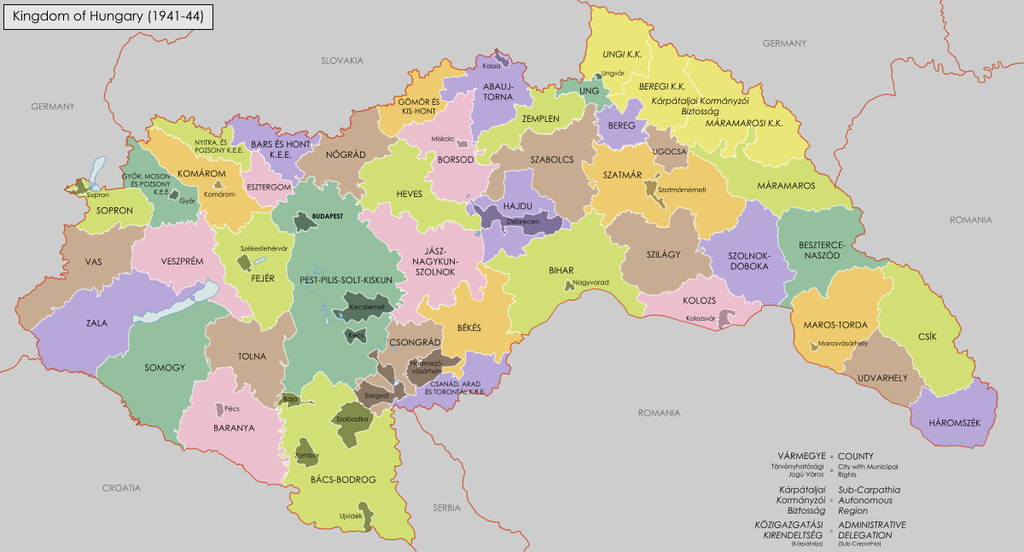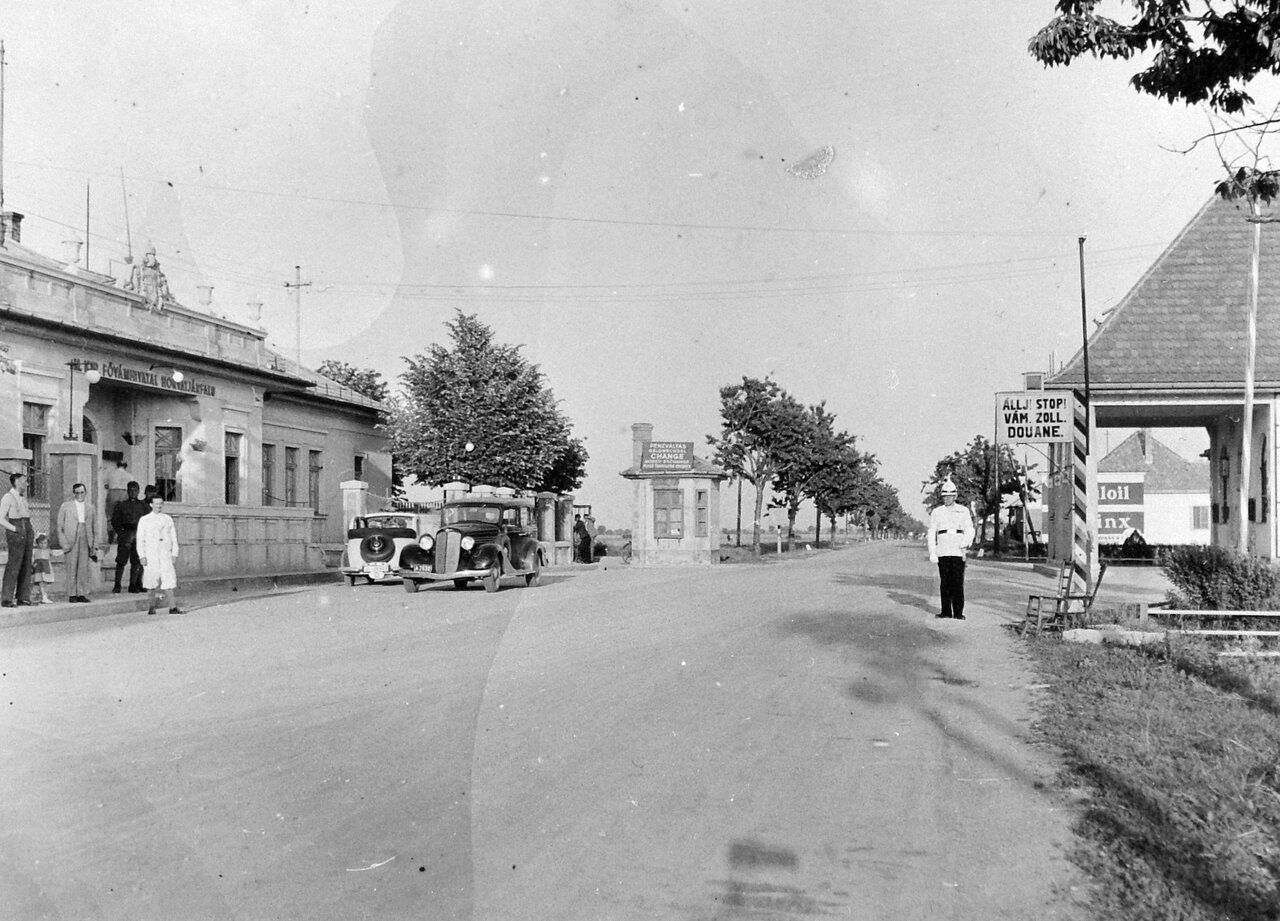Why is Hungary such a small country? The answer is 75 years old

The Kingdom of Hungary, as part of the Austro-Hungarian Empire, was one of Europe’s great powers. With a territory of 325,411 km² and a population reaching almost 20 million, its leaders dreamt of the colonisation of the Balkans. Then came WWI and the peace treaty of Trianon. The country’s territory was reduced to 93,075 km², and its population barely exceeded 7.6 million. However, nobody thought the provisions of the treaty would remain in effect. Thus, the hope of regaining the lost territories lingered.
Hungarian citizens were hopeful after WWII
In that respect, the new leadership of the country was successful. Though it meant that Hungary became more and more vulnerable to Nazi Germany, the public supported the territorial growth of the country. In 1938, the Southern part of Slovakia was rejoined. In 1939, Hungarian troops claimed Transcarpathia. In 1940, North Transylvania was taken back. In 1941, Hungarian troops occupied some territories of Serbia with a Hungarian majority.
The territory of Hungary grew to 172,017 km², while its population once again reached almost 11 million.

However, only 78 pc of the citizens regarded themselves as Hungarians. After being on the side of those that lost the war, everybody knew that there would be losses. The biggest question was which territories Hungary could keep.
According to 24.hu, Hungary signed the armistice with the Soviet Union on January 20, 1945. The document made it clear that the allies did not accept the territorial growth of Hungary. Thus, it reestablished the Trianon borders. However, that decision was only temporary since the peace treaty had to resolve the matter. The public hoped that Hungary would be greater than after the Trianon treaty. An opinion poll conducted in January 1946 showed that 49 pc of the citizens of Budapest thought that border regions inhabited by Hungarians would be returned. Only 37 pc believed that the Trianon borders would be reinstated. Nobody thought that Hungary would be even smaller than after Trianon. On the national level, these rates were 70 and 25 pc. The citizens of the country were even more hopeful. Though only 50 pc believed that Szeklerland would remain part of Hungary, more than 75 pc thought that Arad, Nagyvárad (Oradea), and Szatmárnémeti (Satu Mare) would be returned.
- Read also: Did Hungarians first bring pants to Europe?
Western allies to support Hungary?
In 1945, Kisgazdapárt (the party of smallholders) gained 57 pc of the votes. They had to form a coalition government with the Communists because of Soviet pressure. However, they believed that Hungary could and should claim territories from the other defeated country in the region, Romania (Czechoslovakia and Yugoslavia were both victors). The foreign secretaries of England and the USA supported a plan which would have given territories in the Partium, today’s West Romania, back to Hungary.
In their meeting on September 20, 1945, even the French foreign minister supported the Hungarian proposal. However, the Soviet Union rejected any Hungarian claims because they wanted to compensate Romania for Moldova taken by Moscow by giving them Transylvania. However, neither foreign minister Molotov nor Stalin told the Hungarian delegations. They said that the USA did not support the Hungarian plan. The allies agreed about the Hungarian-Romanian border on their May 7 meeting in 1946.

Even though the decision was leaked, the Hungarian delegation travelled to Paris in August with territorial claims against Romania. They wanted 22 thousand km² with 2 million citizens and territorial autonomy for Szeklerland. Following American advice, they later proposed a more moderate plan, claiming only 4 thousand km² and 0.5 million inhabitants. However, the great powers did not support any of the plans.
Paris worse than Trianon?
Furthermore, the peace conference took three villages from Hungary and gave them to Czechoslovakia. They said that the villages were of strategic importance to protect Pozsony (Bratislava).
Starving Hungary had to pay compensation of USD 300 million to the victors. Moreover, the peace conference did not attach any minority protection requirements to the peace treaties. As a result, Romania, Czechoslovakia, Yugoslavia, and the Soviet Union regarded the situation of Hungarians living in their territory as a domestic policy question.
Hungary signed the peace treaty of Paris on February 10, 1947.

The Iron Curtain falls down
Interestingly, the public accepted the Paris peace treaty. Most people said that even an ethnic-based revision of the borders is no longer an option. István Bibó, one of the greatest Hungarian minds of the 20th century, believed that Hungarians needed to accept the Trianon borders. Furthermore, they should be an example of how small people can remain moderate. However, he added that Hungary has to take responsibility for the destiny of the Hungarians living abroad. Gyula Szekfű, a popular historian of the Horthy era, concurred.
Though Hungary regained its sovereignty by signing the treaty, the Soviet troops stayed, and Hungary was forced to become a member of the forming Communist Block. As a result, Communists gained power, and nobody could talk about the question of national minorities on the borders of Hungary until the regime change in 1989.
Source: 24.hu, DNH






The answer is not 75 years old. The answer is that it dates to the 28th July 1914 when the Austro Hungarians effectively started WW1, albeit aided and abetted by Germany. That makes it 108 years old this July. If the Austro Hungarians had not started the war (and lost) then Hungary would probably still be intact. Trianon was a punishment, not the misdeed.
And it wasn’t the Austro-Hungarians, but the Austrians who set the war into play.
Missed out our little little collaboration history with the Nazis, as well.
Hungary introduced the infamous Nuremberg (race) laws as early as 1938. We formally joined the Axis in 1940…
THE GREATEST INJUSTICE IN THE HISTORY BOW YOUR HEAD IN THE SHAME WESTERN COUNTRIES ESPECIALY USA